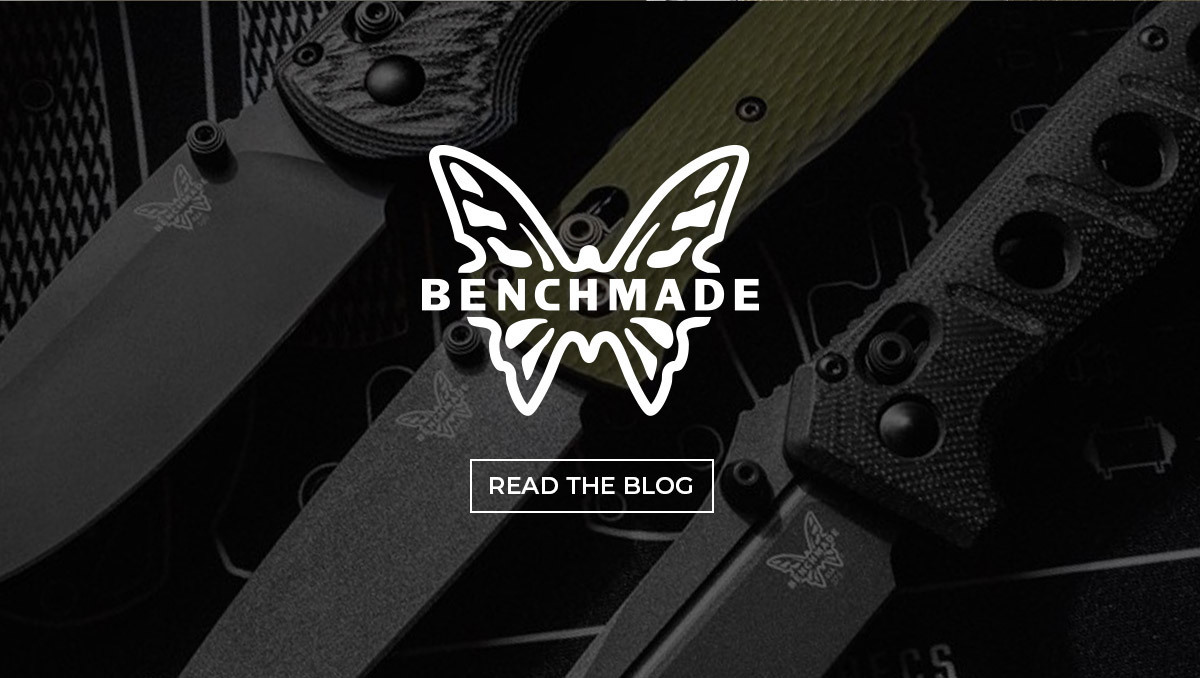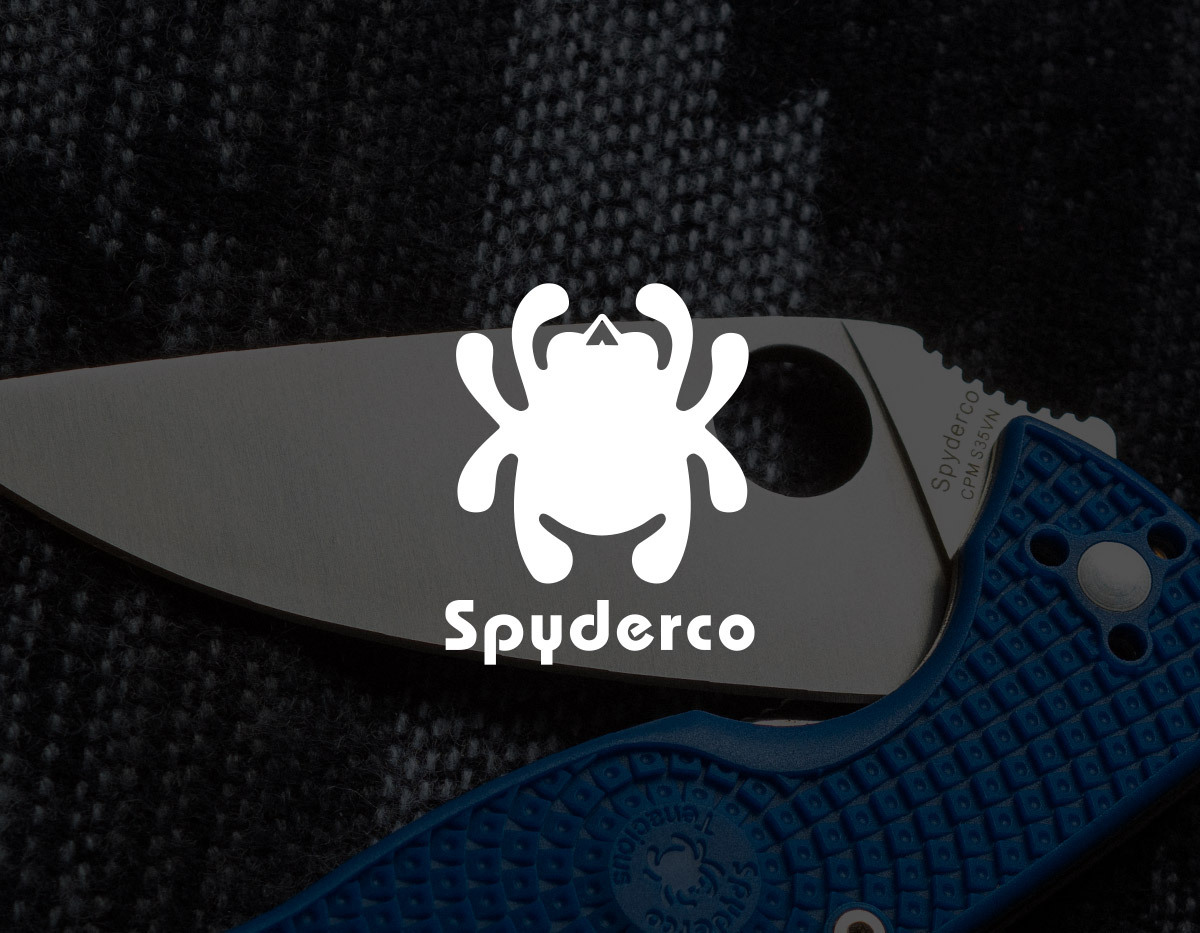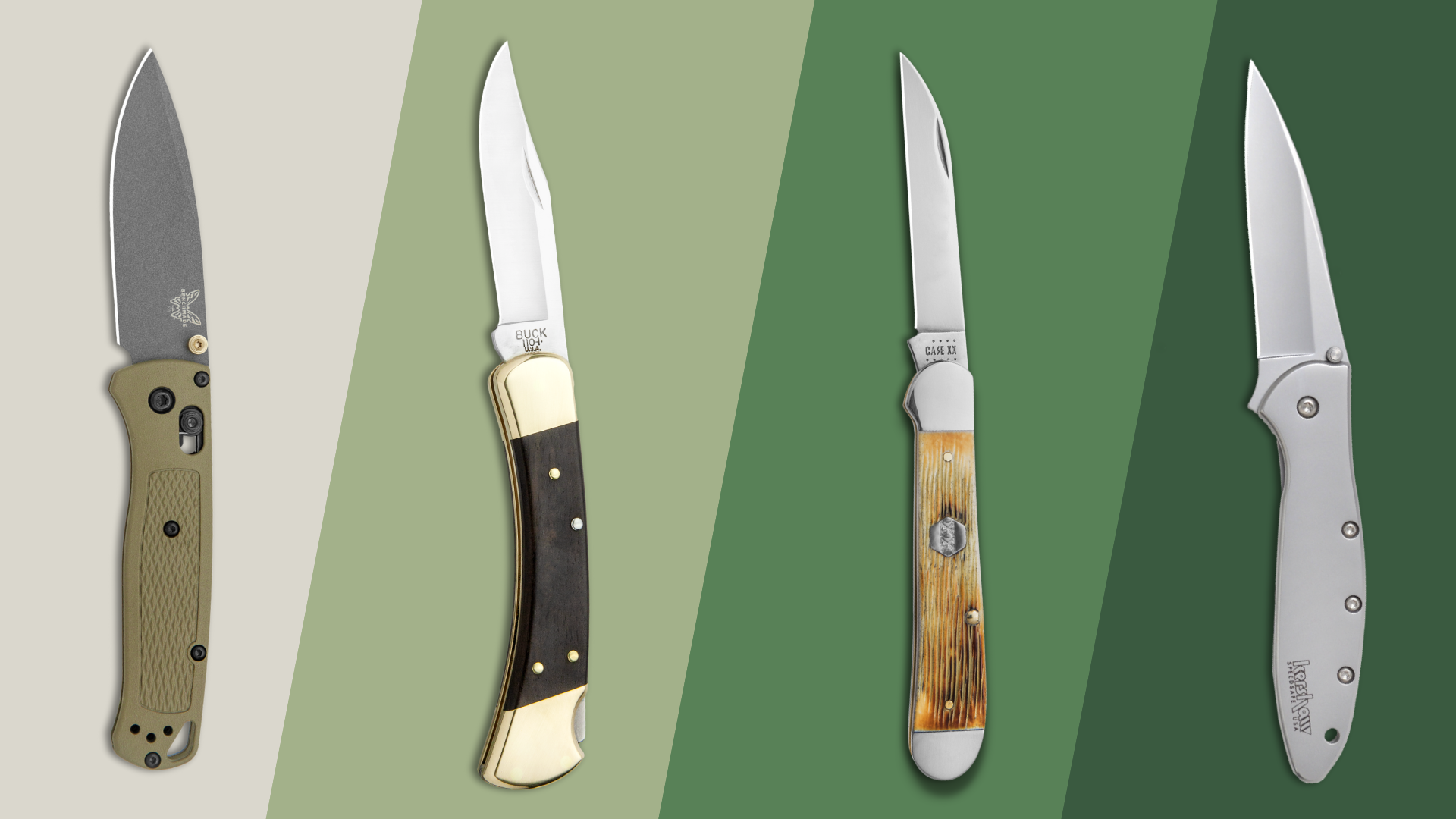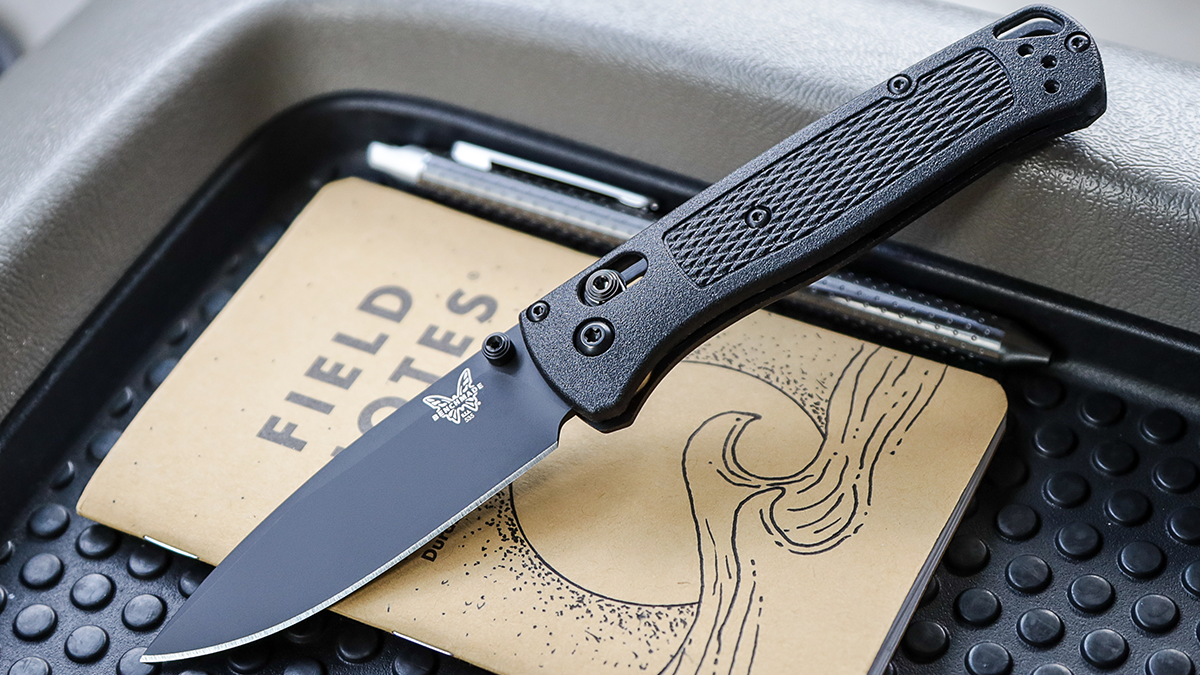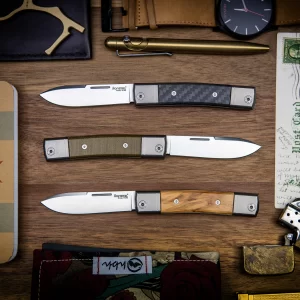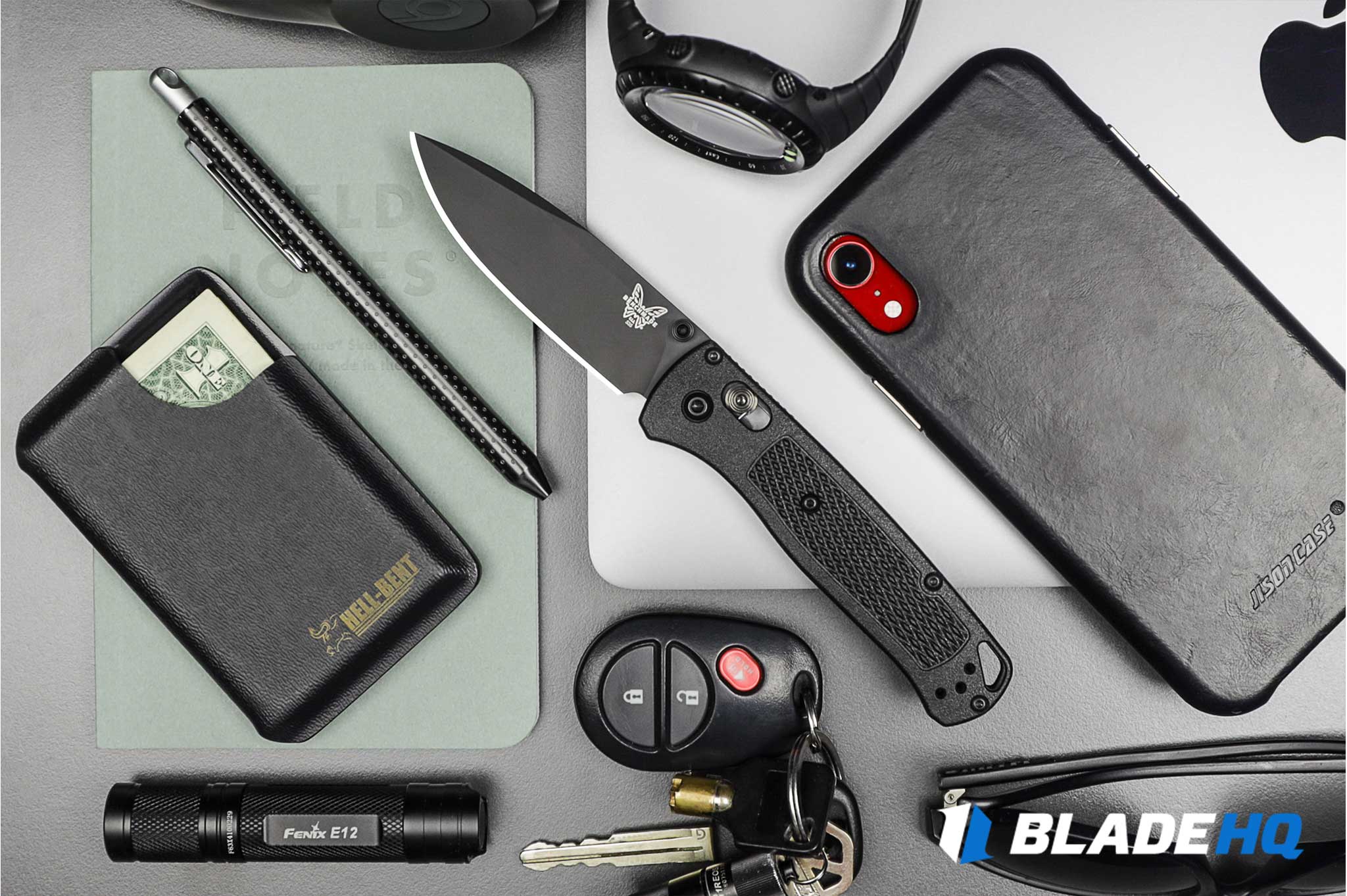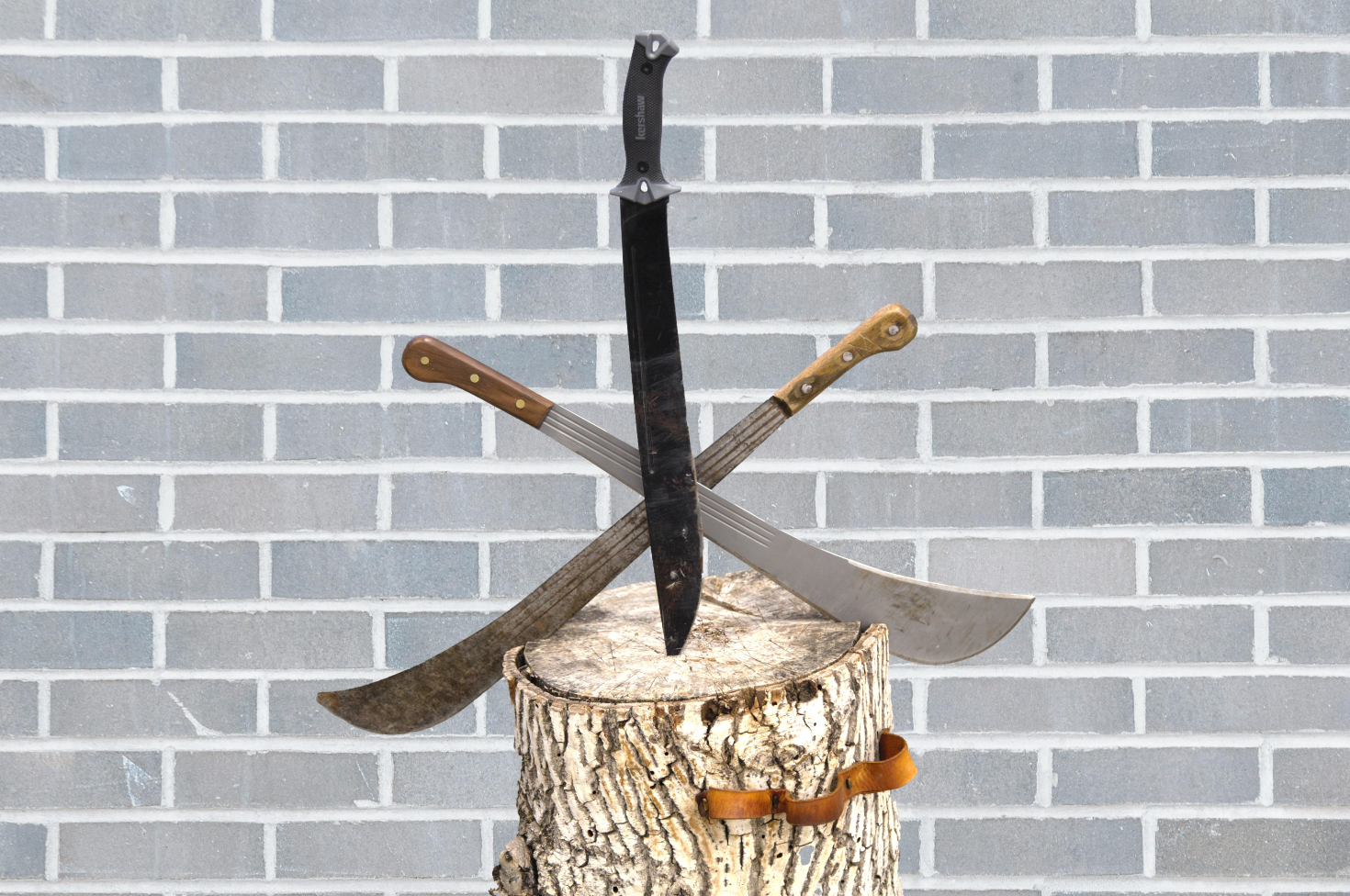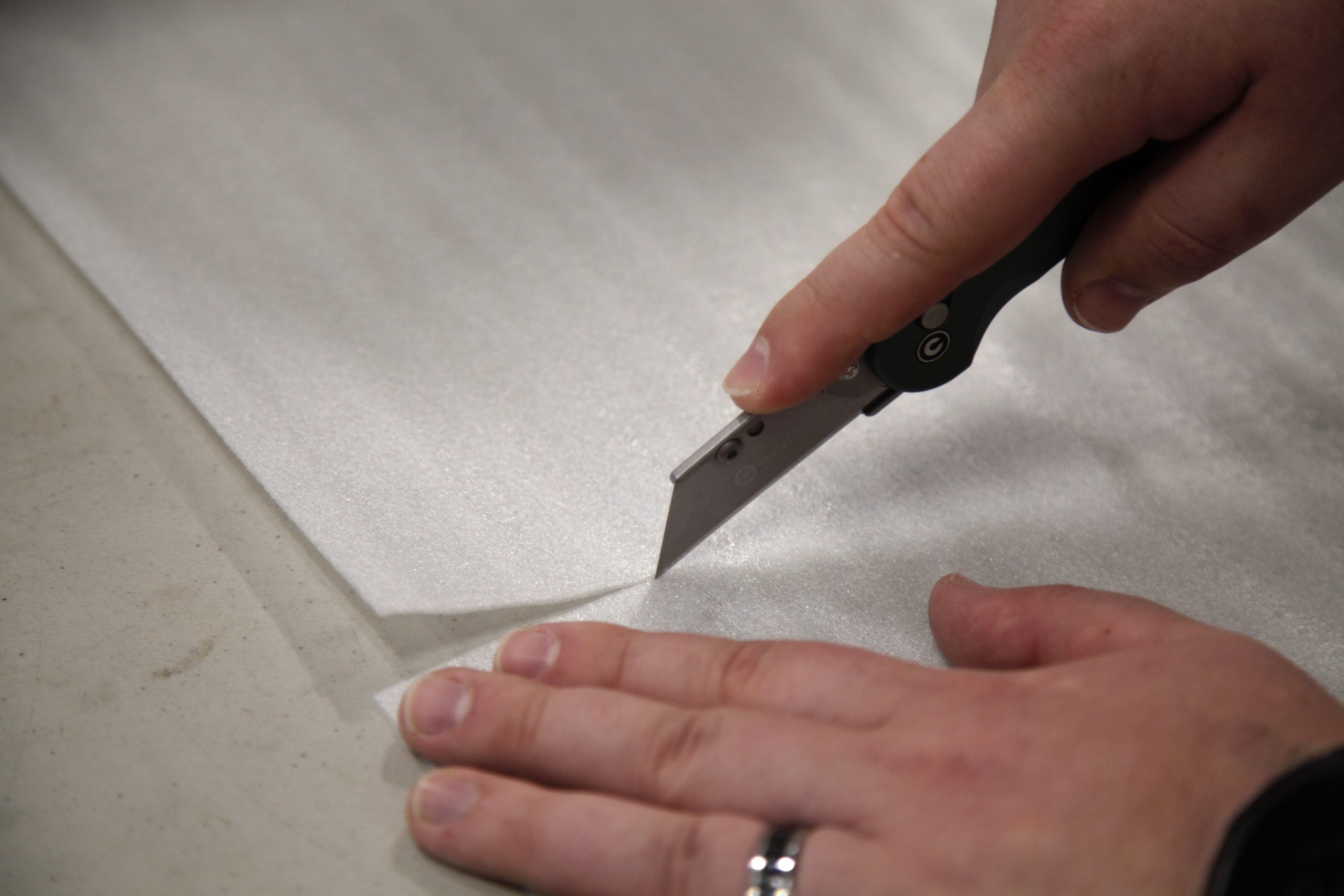
A pocket knife is an essential tool. Essential. From opening a box to un-entangling trapped dog friends to rescuing and saving a human life, people in the know recognize a blade as a necessary tool. Doesn’t have to be a bowie. It can be the tiniest Swiss Army known to man. But everyone needs something.
People without something slicey on hand remind me of my older brother, who still won’t get a cell phone. He says he just borrows one if he needs to make a call. I’ve been there. Forced to stop mid-run in my daily schedule and stand waiting while he fumbles over unfamiliar technology. Because if I leave him, it’s not like he’ll bring my phone back to me. But if you’ve ever been asked for your knife, it’s a similar feeling of irritation. Dude–just get your own.
Because, like I said, everyone needs a knife. Let’s start at the basics.
What Exactly Is a Pocket Knife and Why Do I Need One?
If you’ve been with us a while, then we’re guessing you know. If you’ve just found us because you’re doing a school report, then welcome! This is for you. (We hope you get an A.)
Basically, a pocket knife is one or more blades that fold into the handle so the user can safely store the knife in a pocket. Also known as a jack knife. (That’s it.)
The pocket knife is the easiest way to have the right tool for the job (or close enough). A pocket knife brings a cutting edge to your pocket, because you can’t schedule in when you’ll need to cut tags and threads from your clothes, slice open clamshell packaging (the most common packaging choice for scissors in a cruel twist of irony), or even free yourself or others from a seatbelt.
A pocket knife expands the scope of the knife, making it safe to carry on your person in whatever bag, pouch, or pocket you have. No longer do you need a bulky sheath or scabbard to carry your bladed tool of choice—the folding mechanism is its own sheath. Slip your knife in and out of your pocket and reflect fondly on the fact that your jeans and skin are still intact.
The Invention of Our Favorite Folding Mechanism
The emergence of this essential tool must’ve been a godsend to farmers, ranchers, and …. well, everyone. But when were pocket knives invented?

Jeroen Zuiderwijk, Public domain, via Wikimedia Commons
Everyone agrees that the folding knife goes back to the Iron Age. The oldest so far was found in Austria, the age estimated to be from between 500 to 600 BC. Until then, people used bronze to make implements, though no folders have been found yet in that metal, but bronze was expensive and got rarer, so people turned to iron. And somewhere in there, someone made a folding knife. (But people only invented pockets about 500 years ago, so I can’t help wondering about that. So, a thief would cut the strings to your man purse and you’d reach for your knife to defend yourself…but it would be … in your purse? A fatal flaw in the system.)
Then the Romans came in and built roads, bathhouses, conquered lots of people, and made lots of knives–not necessarily in that order. We’re guessing knifemaking was for battle and self-defense, but when the Romans faded away in Medieval times, it’s more likely pocket knives were used as tools more often than for violence.
In Spain, they’d been using pocket knives even in pre-Roman times, but in the 1600s a locking pocket knife was invented and it became a huge part of their culture. A decree had gone forth that only nobility could carry swords, so everyone else had to get creative. And they did. The Navaja became the blade of choice and was used for tools, street fighting, opposing Napoleon, and by assassins and thieves. The modern lockback would be invented by Al Buck, but more about that later.
Sheffield, England, the Peasant Knife, and the Barlow

It wasn’t until changing manufacturing practices that pocket knives became available (AKA affordable) for everyone, and it all started in Sheffield, England. It’s mainly geography. The conditions were perfect for knifemakers. The hills were rich in coal and iron. The city’s several rivers provided power. Even stainless steel was developed there in 1912. It started with the Peasant Knife, also called the Penny Knife because it only cost a penny, and Sheffield became THE place for knifework.
The Barlow knife came on the scene, and lots of people fight over which person with the last name Barlow invented it, but yes–Sheffield produced it. We’ve talked before about Barlow knives and how a man wasn’t considered a man until he had one. Even George Washington and Abraham Lincoln had one. Mark Twain favored them, and in his book Huckleberry Finn, the boy found a dead man with a Barlow buried in his chest. Every boy dreamed of the day he would own a Barlow of his very own. A timeless design and still popular today.
More knife styles followed. If you want the feel of other traditional folders from the past, Case Cutlery is a sound choice for your collectibles. They’re known for their classic designs. Here are a few:

Case Trapper
Originally designed for fur trappers, the Case Trapper generally has two blades: a clip point and a spey point. This is an excellent camping and everything outdoorsy knife.

Case Stockman
For more flexible use, the Case Stockman has three blades that are also ideal for your outdoor adventures. This folding pocket knife has a clip point, drop point, and sheepsfoot blade. Once again, this piece is great for general tasks and can handle just about any small job.

Case CopperLock
Designed by W.R. Case himself, the Case CopperLock combines the Trapper and the Copperhead to make a whole new life–a locking clip or Wharncliffe blade that has excellent style and safety.

The Marilla and Kinzua are a recent departure from the traditional, but personally I love that Case is expanding outwards. If people didn’t, we’d still be in the Bronze Age without any pocket knives at all, and that’s just unacceptable.
I love the tanto design in the Kinzua. Honestly, I’m just a fan of the strength and shape of a tanto or a reverse tanto. However, the Marilla flipper has an aluminum scale with a texturized G-10 inlay that’s just killer. The Marilla won American-Made Knife of the Year at Blade Show 2021, so … a hard choice.
Anyway, let’s jump back in…
Back to Sheffield, England
America started making knives, especially their version of the much beloved Barlow, but what really revolutionized the knifemaking industry in the United States goes right back to Sheffield, England–namely, the Chartist Uprising from 1838-1848. In 1840 there were over a hundred thousand skilled knifemakers in Sheffield who weren’t allowed to vote. And they weren’t happy about that. (The working class wasn’t allowed to vote at all.) They petitioned, they rebelled, they got arrested, sentenced to hard labor, languished in prison boats, and got sent away from their homes and families to Australia. Millions signed demands for equal treatment, but the petitions weren’t even considered by the government.
A few master cutlers emigrated to America, wrote back home that knife shops in the states needed people who knew what they were doing, and so a huge group came over and walked off boats right into the forges. These were apprenticed, skilled knifemakers who brought everything Sheffield had to offer to Waterbury, Connecticut and beyond.
A few years later, the plant knuckled down and wanted to cut wages and require men to bring their own tools, so lots of the workers broke off and formed their own knife companies. I think Sheffield knife families had been through immense challenges fighting for their rights and were not about to take anything that suggested they weren’t equal or valuable to their employers. Their innovation, attitude, and fight spread through the American-made knife industry.
Modern History: More Recent Innovations in the USA
Over the decades, we’ve seen master craftsmen playing with knife design, perfecting features, and coming up with whole new ideas. All to give you the best knife they can create—and one you’ll always want on you.
You’ve got to have a knife you love. One that feels right in your hand and one that does the work you need it to do. Luckily, the men and women making the knives know exactly how you feel, because they feel just the same
We recently wrote about the much beloved, truly revolutionary Benchmade 940, which changed the knife world forever. This is a big one and deserves its own space, so if you want to read more about the 940, take a look at our Benchmade Osborne 940 Series Review.
Today, we’re going to cover some other stellar knife designs and go over why they belong in your pocket.
Let’s talk specific pocket knives.
Our favorites? Man, that’s a hard one, but we’re glad you asked! We’ll argue this into the ground because we are knife people here and we all have our very opinionated …. opinions. Believe me, for every knife we didn’t pick there’s a Blade HQ employee muttering angrily to themselves in a corner. But here’s what we came up with for this round.
Buck 110
Invention: The Modern Lockback
The Buck 110 blew everyone’s minds when it came out in the 1960s, and it was the first folding knife considered strong enough to be a hunting blade. The first folding hunter and modern lockback? Everyone wanted one. Never had such a lock been so widely available for use by any knife wielder ready to plunk down his or her $16, the price at the time. If you like traditional, or rather the first non-traditional knife to break the mold so that it’s now considered the classic, then this Buck knife is your best bet.
They’ve sold millions of this knife. People tend to go for the vintage style, but there are now ones with thumb studs and there’s even an automatic version. Through all incarnations, it’s still a hard-working classic that hunters, fishermen, and ranchers swear by.
For more hunting knives, folding and fixed, check out this list of the Top 10 Best Hunting Knives (in our opinion).
Spyderco
Invention: The Pocket Clip
Whether or not you can pull off a decent Spydie flick and are a devoted fan of the iconic round thumb hole opener, you can’t deny the power and innovation of Spyderco. They were the very first to put a clip on a folding pocket knife, and one was even on the very first folder they ever produced, making that cute little spider stand for revolutionary design.
Shaman

It’s beefy. It’s sharp. It’s a hard worker, just like your mom always wanted for you. (Spouse, knife, whatever). The Spyderco Shaman fits beautifully into your hand like the guy that designed this is a freaking genius or something, because this large knife, ergonomically speaking, keeps your fingers pain-free through intensive projects. We love it because it’s one of the toughest blades out there and goes above and beyond–it’s an even better tool than you expect it to be. The patented Compression Lock is supreme, and the four-way clip is a fan favorite.
If you follow the commentary on reviews and expert YouTubers, then you know that knife aficionados everywhere were clamoring for the blade to be made in M4 steel, so we’re super chuffed that Spyderco listened to their fans and we’ve been carrying the exclusive of this stellar version. This steel with that knife is a dream come true for Spyderco fans, including us.
Paramilitary 2
Ergonomically speaking, Spyderco’s Paramilitary 2 is another winner. The knife seems to be made for everyone to hold comfortably, no matter their hand size. The PM2 is similar in size to the Shaman, but lighter. It’s still up for the job of a hard-working knife, with balance and tough useability, it’s just not as hardcore. The design still features the same fantastic Compression Lock, and it’s made of phenomenal materials at a great price point. Here’s an early review if you’d like to take a look. This stunner in teal with a black blade is a favorite.
Paramilitary 3
If you’re all about Spyderco but just want a smaller knife, the Paramilitary 3 is for you. The Para 3 Lightweight is even more everyday-carry friendly. The famed Compression Lock is still front and center, and the materials are impressively high quality. If you are looking for a tough Spyderco that disappears into your pocket until you need it, this is the knife for you. Still Spyderco, still knocking knife design out of the park with unmatched innovation. If your hands are on the larger size, you might want to stick with the PM2 or the Shaman, though.
Benchmade Bugout

Invention: The AXIS Lock
The Benchmade Bugout is one of our top sellers for a reason. It fits your hand well, the blade is super-slicey, it’s astonishingly thin and light for a knife this size, and oh, that Axis Lock!
How does the AXIS work? If you’ve wondered, here’s what Benchmade has to say:
The AXIS system works using a small, hardened spring loaded bar that moves back and forth in a slot made into both steel liners. …The two omega-style custom made springs are placed on each liner gives the locking bar the inertia needed for full tang engagement, which places the tang between the stop pin and AXIS bar for complete lock up.
And it sure is a lot of fun!
Mechanisms that lock your blade beautifully into place and release from either side–ambidextrous lock and opener–of the handle are a beautiful thing. Fidget like mad and then slip it away without bulking out your pockets.
When the Mini Bugout came out, people were flummoxed. What, the first one under 2 oz. wasn’t light enough for you? But there’s a whole lot of knife in a light, compact design. Looking for an unobtrusive, ideal folder that can take on everyday tasks like a champ? The Mini might just be your new favorite.
We’re particularly fond of our exclusive Bugouts. With CPM 20CV super steel, gray scales, green titanium thumb studs, and all the crazy-great features from Benchmade that make the Bugout so popular–it is a stunner. Definitely worth a look.
Hogue Deka

Invention: MagnaCut Steel (developed by Larrin Thomas)
MagnaCut was a recent, major breakthrough in the steel world. The edge retention, toughness, and stain resistance are incredible. There’s nothing quite like high-performing steel to turn your EDC into a work of art. We can’t gush enough over the material and the shape of these blades. If you’re still not sold on how revolutionary MagnaCut steel is, read more about it in our article about MagnaCut Knife Steel.
Steel aside, let’s address the perfection of the Hogue Deka overall. While not the first knife to use MagnaCut steel, it is one of the most affordable models and best entry point into adding this groundbreaking invention to your collection. This wicked cool design has garnered the notice of the knife world and scores of devoted fans. The textured handle has great grip and your hand just molds into the ergonomic fit. The ambidextrous dual thumb studs and lockbar are excellent features, and then there’s also the sturdy G-10 handle and minimal steel liners to support the lock. Basically, for the price point there sure is a lot of knife there. Big time bang for your buck from Hogue Knives.
Kershaw Leek
Invention: SpeedSafe Technology
The Kershaw Leek one has been on my “Must Acquire” list since I started at Blade HQ. Unfortunately, that list is long and growing. But this is the first knife I noticed. I mean, look at that sleek piece of work. This popular assisted opening knife features Ken Onion’s invention and the now-patented SpeedSafe technology through Kershaw. Give the thumb-stud a push and the knife takes over–fast easy, safe and somehow oh, so very legal where most automatic knives are outlawed. We love a one-handed opener with a good safety lock, so the blade won’t fire without your consent.
What I love almost as much as this knife–almost–is the name. That Ken Onion would lean into his name and design knives called the leek, the Scallion, and the Shallot brings an extra dash of joy to my life. He is one of the most successful players in the knife industry and has won more Blade Show awards than any other designer, so you can’t go wrong with one of his creations.
And More
There’s just so much, people. The rise of Benchmade through their work on the butterfly knife. Kershaw and and their Lucha, too. The tactical wonders of Microtech and Protech. The multi-tools from Leatherman, ASK Jefferson, and Benchmade. We can’t possibly cover them all, at least not all at once. We’ll be writing more about these marvels and we’ll keep making our videos but contact us and let us know what you think we should be talking about.
Conclusion: Last Stop in Sheffield
These days, the steel mills in Sheffield, with few exceptions, are silent. (If you ever saw The Full Monty, a movie about some out of work steel workers in Sheffield, you may have made the connection.) Abandoned buildings and factories are now the playground of urban explorers and graffiti artists. The city that was once the center of cutlery and steel has had to move on in other directions, but their legacy continues. The knifemakers who were once part of this history shared their talent and knowledge, and they own a footprint in the visionary works of today. Of course, they were not the only ones. All over the world there have been artists and movements that changed the face of knifemaking. But at least here, in the United States, I believe the Sheffield contribution was a huge influence that has been primarily forgotten.
All this history and innovation doesn’t amount to much if we don’t have the tools we need. There are fixed blades out there that are definite winners, and these are our top picks for Best Fixed Blade Knives, perfect for when you need a supremely solid knife, but even if you’re a fixed blade guy or gal I would recommend having a pocket knife, too. For one thing, some environments aren’t always friendly to fixed blades and it’s good to have a backup to handle life’s little emergencies. And they will. They just do.
We’ve recommended a lot of American-made knives in this article and emphasized the industry that sprung up here. Knife collecting seems to be a particular favorite of Americans. Collectibles are high on our list, and we all have our wish lists, but we recommend you also have some heavy-duty blades for camping and outdoor activities.
Butterfly knives for recreation are always a blast and can also handle little jobs that come up.
We also recommend a multi-tool you can keep near you, because we can’t carry our toolboxes around with us and even the best knife can’t do everything. Or so I’ve been told.
Reach out and let us know what you think is essential for your pocket or sheath. We’d love to hear from you! If you want more about the history of your favorite knives, check out our YouTube channel for the in’s and out’s! We recommend this History of the Benchmade Osborne 940, a knife design that changed the game upon its release 20 years ago and has kept ticking since.


